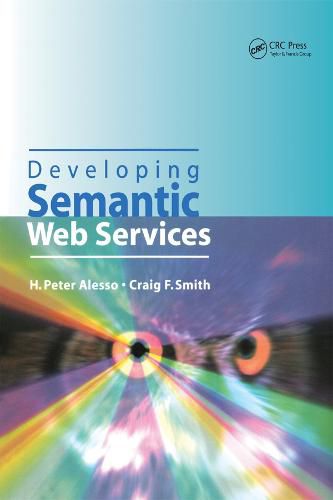Readings Newsletter
Become a Readings Member to make your shopping experience even easier.
Sign in or sign up for free!
You’re not far away from qualifying for FREE standard shipping within Australia
You’ve qualified for FREE standard shipping within Australia
The cart is loading…






Developing Semantic Web Services is well-informed about work on WS [Web Services] and the SemWeb [Semantic Web], and in particular … understand[s] OWL-S … very well …. Also, the book … fill[s] a need that, to my knowledge, hasn’t been met at all. —David Martin, editor OWL-S Coalition The inventor of the World Wide Web, Tim Berners-Lee, is also the originator of the next generation Web architecture, the Semantic Web. Currently, his World Wide Web consortium (W3C) team works to develop, extend, and standardize the Web’s markup languages and tools. The objective of the Semantic Web Architecture is to provide a knowledge representation of linked data in order to allow machine processing on a global scale. The W3C has developed a new generation of open standard markup languages which are now poised to unleash the power, flexibility, and above all—logic—of the next generation Web, as well as open the door to the next generation of Web Services. There are many ways in which the two areas of Web Services and the Semantic Web could interact to lead to the further development of Semantic Web Services. Berners-Lee has suggested that both of these technologies would benefit from integration that would combine the Semantic Web’s meaningful content with Web Services’ business logic. Areas such as UDDI and WSDL are ideally suited to be implemented using Semantic Web technology. In addition, SOAP could use RDF payloads, remote RDF query and updates, and interact with Semantic Web business rules engines, thereby laying the foundation for Semantic Web Services. This book presents the complete Language Pyramid of Web markup languages, including Resource Description Framework (RDF), Web Ontology Language (OWL) and OWL-Services (OWL-S) along with examples and software demos. The source code for the Semantic Web Author, an Integrated Development Environment for Semantic Markup Languages is available on CD-ROM with the book.
$9.00 standard shipping within Australia
FREE standard shipping within Australia for orders over $100.00
Express & International shipping calculated at checkout
Developing Semantic Web Services is well-informed about work on WS [Web Services] and the SemWeb [Semantic Web], and in particular … understand[s] OWL-S … very well …. Also, the book … fill[s] a need that, to my knowledge, hasn’t been met at all. —David Martin, editor OWL-S Coalition The inventor of the World Wide Web, Tim Berners-Lee, is also the originator of the next generation Web architecture, the Semantic Web. Currently, his World Wide Web consortium (W3C) team works to develop, extend, and standardize the Web’s markup languages and tools. The objective of the Semantic Web Architecture is to provide a knowledge representation of linked data in order to allow machine processing on a global scale. The W3C has developed a new generation of open standard markup languages which are now poised to unleash the power, flexibility, and above all—logic—of the next generation Web, as well as open the door to the next generation of Web Services. There are many ways in which the two areas of Web Services and the Semantic Web could interact to lead to the further development of Semantic Web Services. Berners-Lee has suggested that both of these technologies would benefit from integration that would combine the Semantic Web’s meaningful content with Web Services’ business logic. Areas such as UDDI and WSDL are ideally suited to be implemented using Semantic Web technology. In addition, SOAP could use RDF payloads, remote RDF query and updates, and interact with Semantic Web business rules engines, thereby laying the foundation for Semantic Web Services. This book presents the complete Language Pyramid of Web markup languages, including Resource Description Framework (RDF), Web Ontology Language (OWL) and OWL-Services (OWL-S) along with examples and software demos. The source code for the Semantic Web Author, an Integrated Development Environment for Semantic Markup Languages is available on CD-ROM with the book.